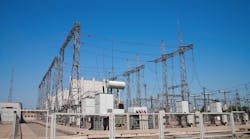Utilities can get a firsthand look at how well IEC 61850-compliant devices talk with other products during the first U.S. test of interoperability this fall in New Orleans. The UCA International Users Group is hosting the test for IEC 61850 devices to demonstrate interoperability and also address potential source of issues.
The two-part event begins with an IEC 61850 boot camp Oct. 13-14, followed by the interoperability testing, Oct. 15-19. Participants in the testing consist of two groups: the first group consists of the actual vendor personnel that setup and test the devices; the second group consists of the witnesses that monitor the testing to assure that the test is completed according to the test procedure and that outcomes are accurately recorded.
Background
IEC 61850 interoperability tests have been held every other year starting in 2011, with 12 participating companies and 35 people. In 2015, 26 companies and 130 people took part. And the group has made progress; from 2013 to 2015, they reduced by half the number of interoperability issues associated with the standard --- many have been easy fixes.
This year’s event will test generic objected-oriented system events (GOOSE), sampled values, system configuration language, routable GOOSE and sampled values, precision time, and security, and more.
The UCA International Users Group has been working to refine the IEC 61850 standard since the mid-1990s. The standard provides a way for devices such as protective relays, controllers, and inverters, to manage the reliability of the grid and support an integrated energy network. Ensuring the devices can speak the same language and communicate, regardless of who manufactures them, helps utilities better manage the supply and demand for electricity in near-real-time. This could ultimately mean less wear-and-tear on the power system --- and as a result, lower, long-term electricity costs for consumers.
For more information visit the IOP event site.


